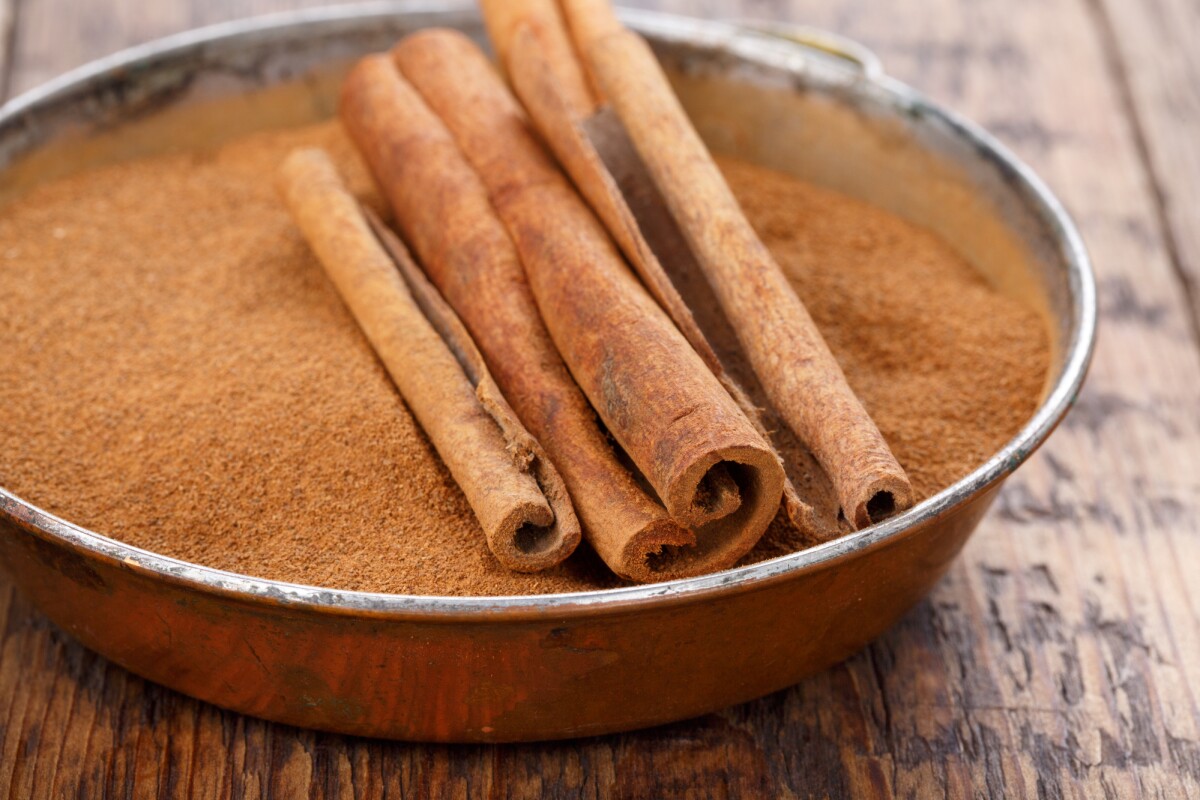
We sort of knew that this effect was out there with a number of plants. All pointing toward an effective treatment protocol that actually stimulates hair growth.
Maybe we can get there with this.
this should express as a sound hair treatment ,sort of like the body shop and their shea nut butter which is the major ingredient in all their creams, if you look closely at the label. Maybe the body shop should pick up on this.
shea butter actually ends chronic skin cracking on your feet.
Hair-loss treatment found in cinnamon
By Paul McClure
March 27, 2024
Cinnamic acid, a component of Chinese cinnamon, promoted hair growth in the lab
A component of the aromatic spice cinnamon caused hair follicles to sprout in the lab, with researchers now set on developing a novel treatment to reverse hair loss through the use of natural compounds.
Our hair is a marker of beauty, pride, and health integral to our identity and how others perceive us. Conversely, hair loss can cause a great deal of emotional strain and reduce our quality of life.
Hair restoration treatments are limited to either surgical (hair transplantation) or non-surgical (drugs) methods. So, finding a novel – preferably non-invasive – hair loss treatment is understandably high on some researchers’ lists. Researchers from the Yokohama National University (YNU) in Japan hope that cinnamon is that sought-after novel treatment.
They’d previously found that the so-called ‘love hormone’ oxytocin promoted hair growth by upregulating genes in the dermal papilla cells that are pivotal in hair formation, growth, and cycling. However, an issue with administering oxytocin through the skin so that it activates this hair-growth pathway is that it’s a relatively large molecule, so absorption is prevented.
Enter cinnamon or, more precisely, cinnamic acid from Chinese cinnamon (Cinnamomum cassia). Cinnamon is already known to possess wide-ranging health benefits, including skin-anti-aging effects and was recently discovered to enhance skin elasticity through its effect on oxytocin receptors. Cinnamic acid, which is widely used in cosmetics, is a fraction of the molecular weight of oxytocin.
The researchers evaluated the effects of cinnamic acid on the expression of oxytocin and hair growth-related genes. Dermal papilla cells were cultured with different acid cinnamic concentrations, ranging from 0 to 2,000 µg/mL. Concentrations of 1,000 and 2,000 µg/mL were observed to cause cell damage and, above 500 µg/mL, considerably inhibited cell proliferation. However, at concentrations below 500 µg/mL, there was an observable dose-dependent increase in the expression of oxytocin and genes associated with hair growth.
Treating hair follicle organoids with cinnamic acid treatment increased their sprouting length, suggesting that the treatment promoted hair growth
Kageyama et al.
A human hair follicle organoid (‘hair follicloid’) was developed that could regenerate hair shafts. Using an organoid, essentially a miniaturized organ, allowed the researchers to simultaneously expose diverse cells to the cinnamic acid treatment, providing larger, more dependable data. They tested 0, 50, 100 and 500 µg/mL concentrations on the follicloids for up to 10 days. Results showed a considerable increase in hair sprouting length by the eighth day at 100 and 500 µg/mL concentrations, suggesting that the optimal concentration fell somewhere in that range.
Compared with oxytocin’s effect on hair growth, which produced a 1.3-fold increase, cinnamic acid produced a comparable 1.25-fold increase.
“The identification of cinnamic acid as a specific component with hair growth-promoting properties holds great promise for enhancing the effectiveness of hair growth products,” said Tatsuto Kageyama, associate professor at YNU’s Faculty of Engineering and the study’s lead author. “In addition, the new understanding of the mechanism of hair growth-promoting effects mediated by oxytocin signaling will provide new insights [for] hair care science and help accelerate the search for new drugs targeting oxytocin receptor expression in the field of drug discovery.”
There’s no benefit to buying Chinese cinnamon in bulk at this stage. Further research will focus on experiments on mice with hair loss to determine the effectiveness of administering cinnamic acid through the skin, the dosage required, and whether it produces any side effects.
However, if you want to conduct your own at-home tests, cinnamic acid can also be found in citrus fruits, grapes, cocoa, spinach, celery and brassica vegetables, which include broccoli, Brussels sprouts, cabbage, cauliflower, collard greens, kale, and turnips.
No comments:
Post a Comment